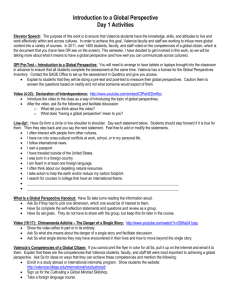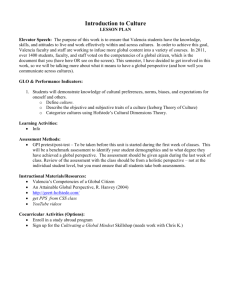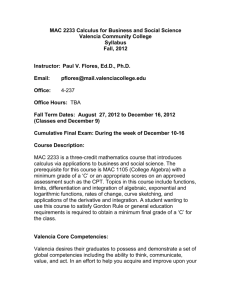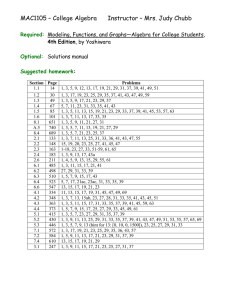09_Introduction to Global Perspectives LP and HO
advertisement
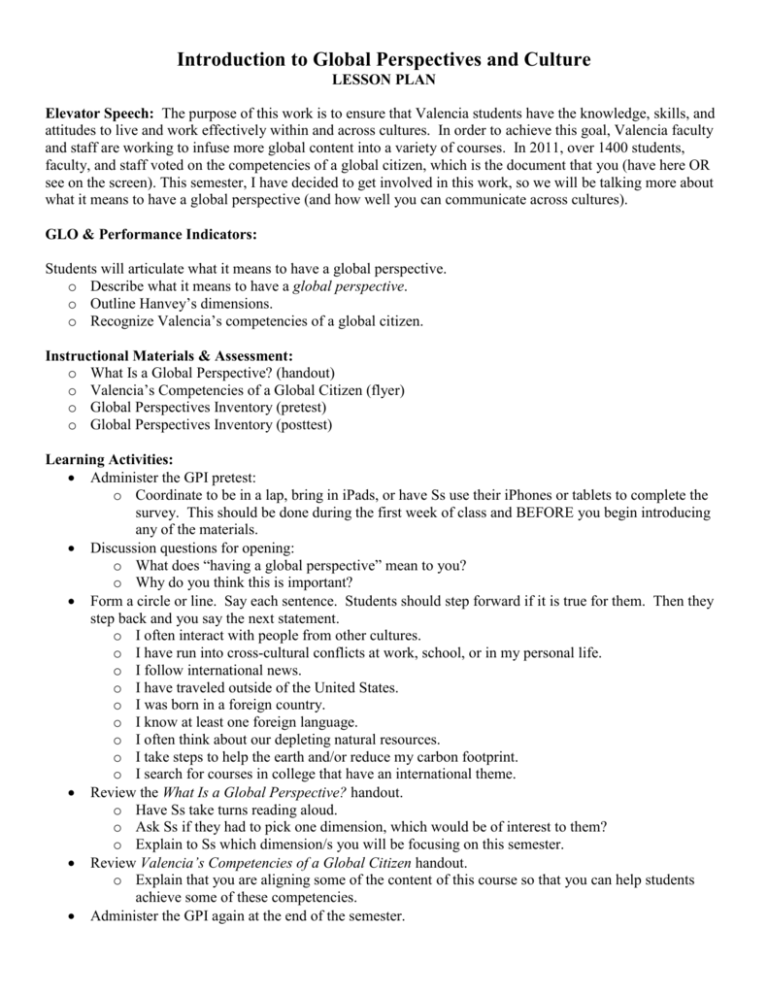
Introduction to Global Perspectives and Culture LESSON PLAN Elevator Speech: The purpose of this work is to ensure that Valencia students have the knowledge, skills, and attitudes to live and work effectively within and across cultures. In order to achieve this goal, Valencia faculty and staff are working to infuse more global content into a variety of courses. In 2011, over 1400 students, faculty, and staff voted on the competencies of a global citizen, which is the document that you (have here OR see on the screen). This semester, I have decided to get involved in this work, so we will be talking more about what it means to have a global perspective (and how well you can communicate across cultures). GLO & Performance Indicators: Students will articulate what it means to have a global perspective. o Describe what it means to have a global perspective. o Outline Hanvey’s dimensions. o Recognize Valencia’s competencies of a global citizen. Instructional Materials & Assessment: o What Is a Global Perspective? (handout) o Valencia’s Competencies of a Global Citizen (flyer) o Global Perspectives Inventory (pretest) o Global Perspectives Inventory (posttest) Learning Activities: Administer the GPI pretest: o Coordinate to be in a lap, bring in iPads, or have Ss use their iPhones or tablets to complete the survey. This should be done during the first week of class and BEFORE you begin introducing any of the materials. Discussion questions for opening: o What does “having a global perspective” mean to you? o Why do you think this is important? Form a circle or line. Say each sentence. Students should step forward if it is true for them. Then they step back and you say the next statement. o I often interact with people from other cultures. o I have run into cross-cultural conflicts at work, school, or in my personal life. o I follow international news. o I have traveled outside of the United States. o I was born in a foreign country. o I know at least one foreign language. o I often think about our depleting natural resources. o I take steps to help the earth and/or reduce my carbon footprint. o I search for courses in college that have an international theme. Review the What Is a Global Perspective? handout. o Have Ss take turns reading aloud. o Ask Ss if they had to pick one dimension, which would be of interest to them? o Explain to Ss which dimension/s you will be focusing on this semester. Review Valencia’s Competencies of a Global Citizen handout. o Explain that you are aligning some of the content of this course so that you can help students achieve some of these competencies. Administer the GPI again at the end of the semester. Introduction to Global Perspectives and Culture LESSON PLAN Assessment: GPI Pretest/Posttest To be taken before this unit is started during the first week of classes. This will be a benchmark assessment to identify your student demographics and to what degree they have achieved a global perspective. The questions on the assessment should be customized based on the GLOs you intend to cover in the course. The assessment should be given again during the last week of class. Review of the assessment with the class should be from a holistic perspective – not at the individual student level, but you must ensure that all students take both assessments. Cocurricular Activities (Options): Enroll in a study abroad program. Show students the website: http://valenciacollege.edu/international/studyabroad/ Sign up for the Cultivating a Global Mindset Skillshop What Is a Global Perspective? Profile of a Globally Competent Student “A globally competent person can work effectively in international settings; is aware of and adaptable to diverse cultures, perceptions, and approaches; is familiar with the major currents of global change and the issues they raise; and is capable of communicating effectively across cultural and linguistic boundaries.” Reference Brustein, W. (n.d.). Paths to Global Competence: Preparing American College Students to Meet the World. Institute for International Education. Education for a global perspective is that learning which enhances the individual’s ability to understand his or her condition in the community and the world and improves the ability to make effective judgments. It includes the study of nations, cultures, and civilizations, including our own pluralistic society and the societies of other peoples, with a focus on understanding how these are all interconnected and how they change, and on the individual's responsibility in this process. It provides the individual with a realistic perspective on world issues, problems and prospects, and an awareness of the relationships between an individual' s enlightened self-interest and the concerns of people elsewhere in the world. Dimension 1: Perspective Consciousness The recognition or awareness on the part of the individual that he or she has a view of the world that is not universally shared, that this view of the world has been and continues to be shaped by influences that often escape conscious detection, and that others have views of the world that are profoundly different from one's own. Dimension 2: “State of the Planet” Awareness Awareness of prevailing world conditions and development, including emergent conditions and trends, e.g. population growth, migrations, economic conditions, resources and physical environment, political developments, science and technology, law, health, inter-nation and intra-nation conflicts, etc. Dimension 3: Cross-cultural Awareness Awareness of the diversity of ideas and practices to be found in human societies around the world, of how such ideas and practices compare, and including some limited recognition of how the ideas and ways of one's own society might be viewed from other vantage points. Dimension 4: Knowledge of Global Dynamics Some modest comprehension of key trails and mechanisms of the worldsystem, with emphasis on theories and concepts that may increase intelligent consciousness of global change. Dimension 5: Awareness of Human Choices Some awareness of the problems of choice confronting individuals, nations, and the human species as consciousness and knowledge of the global system expands. Reference: Hanvey, R. (2004). An Attainable Global Perspective.
